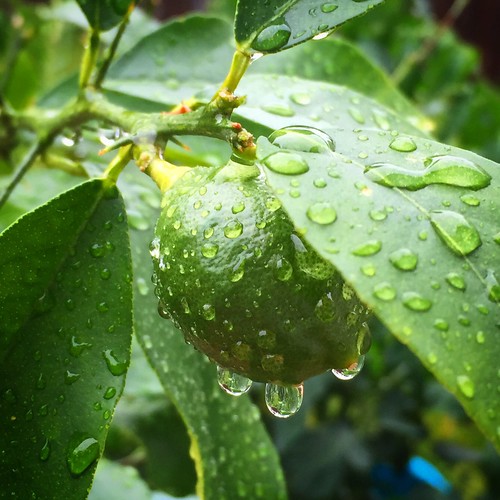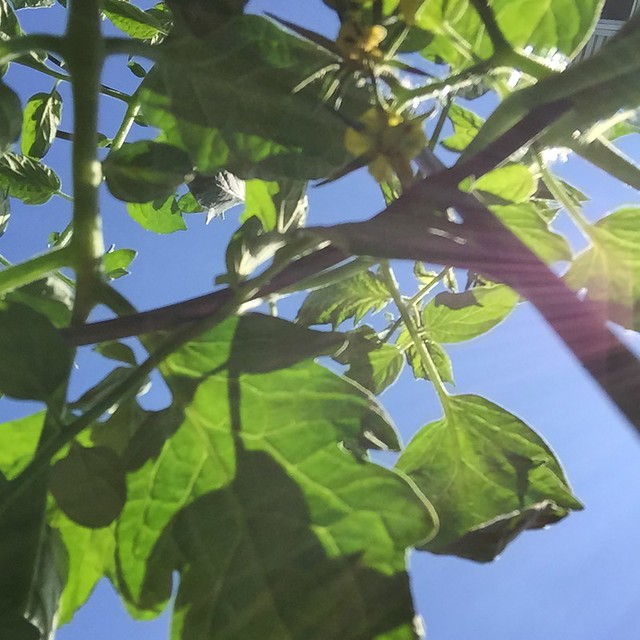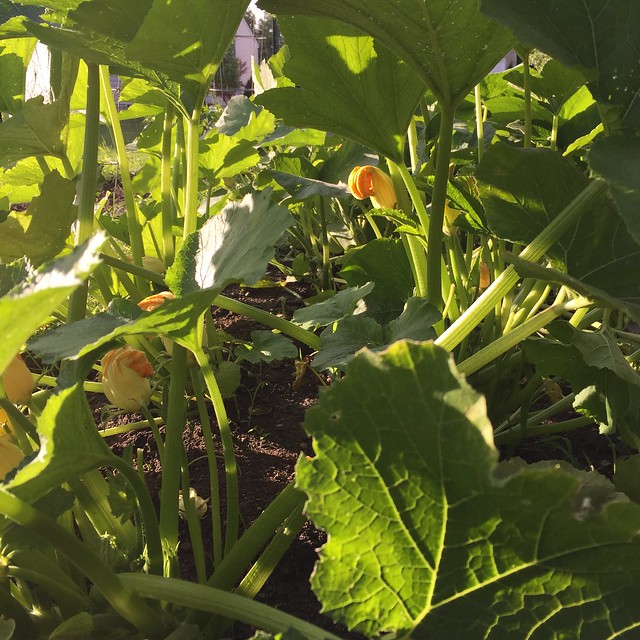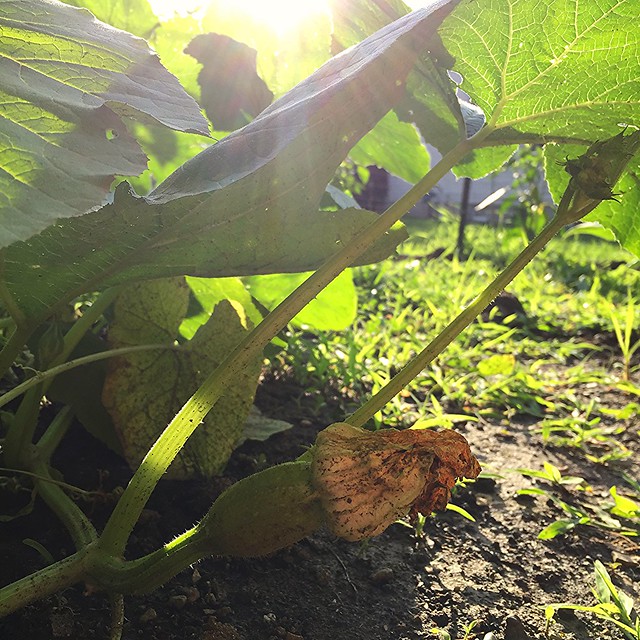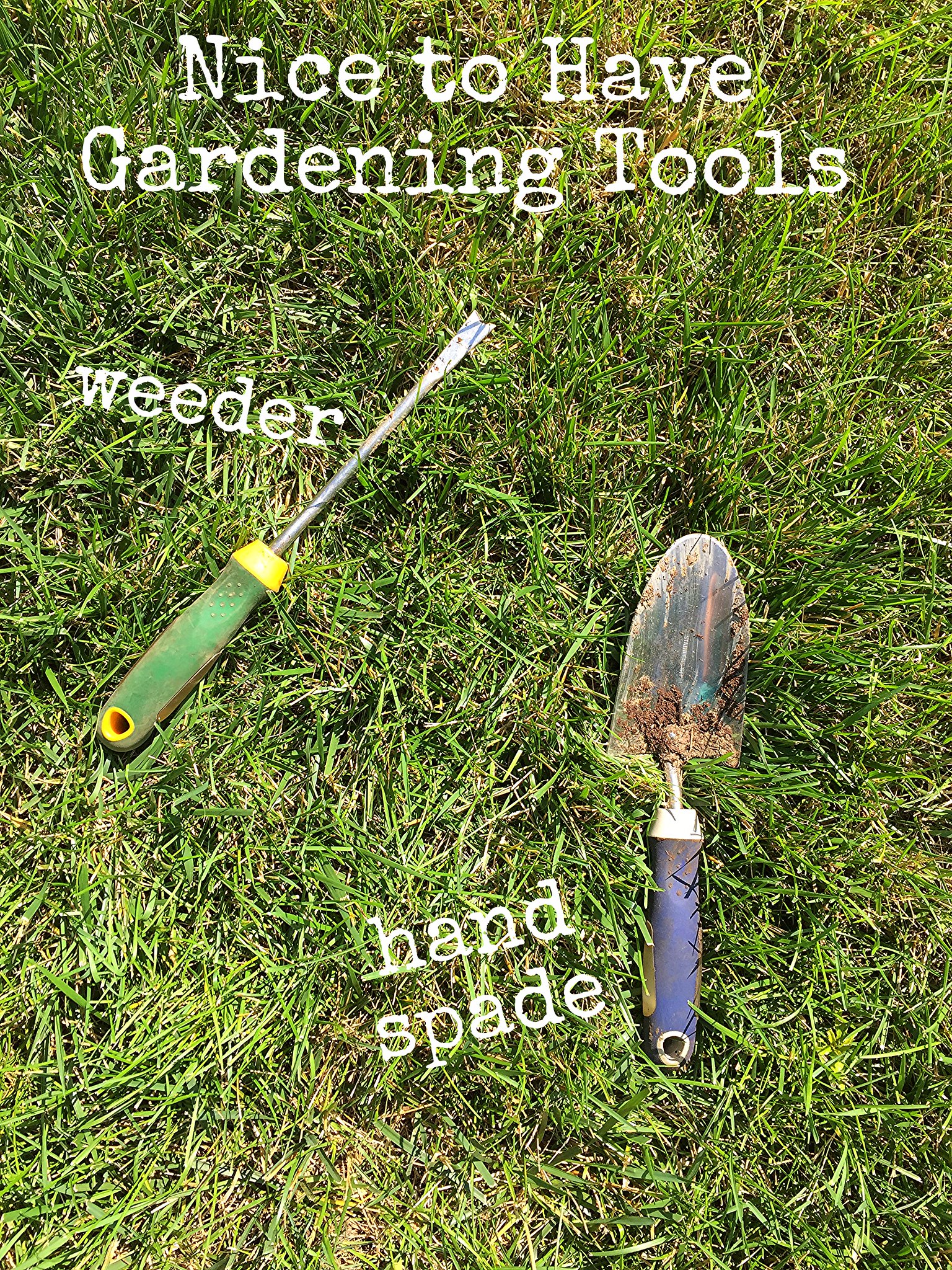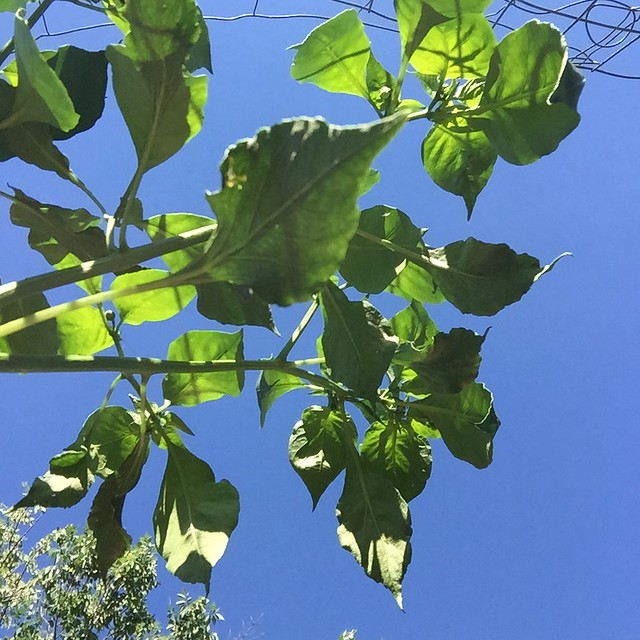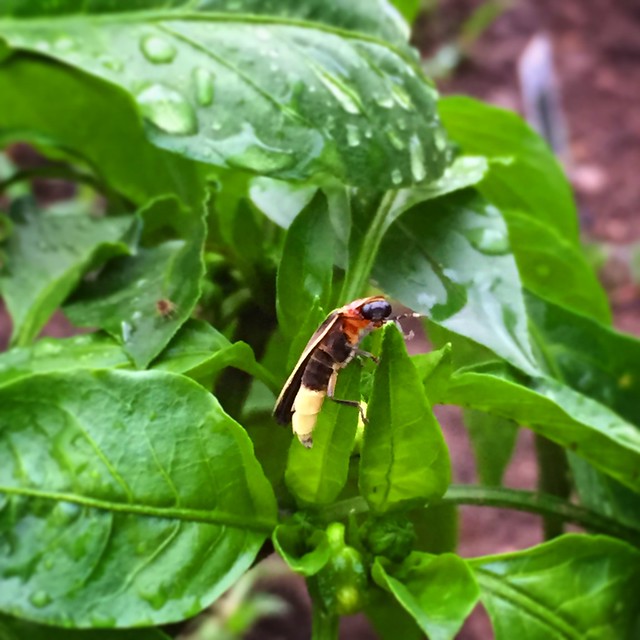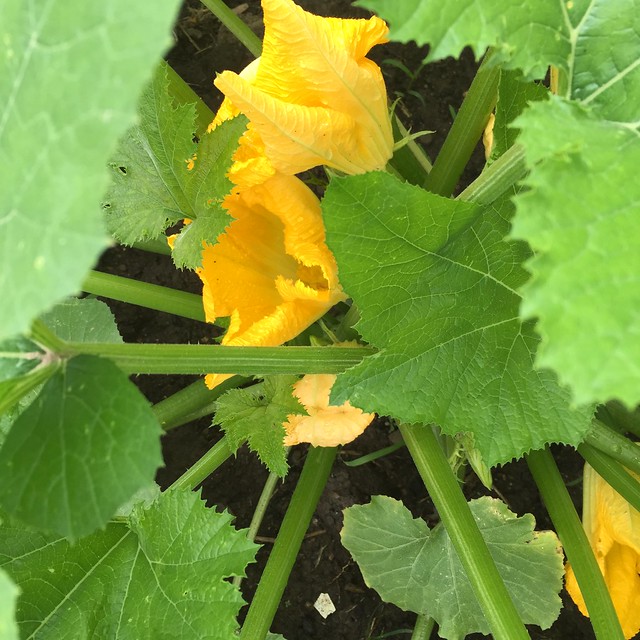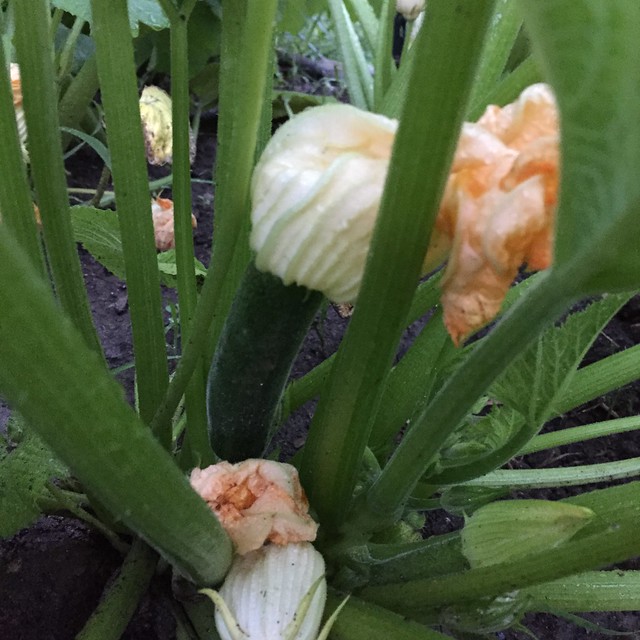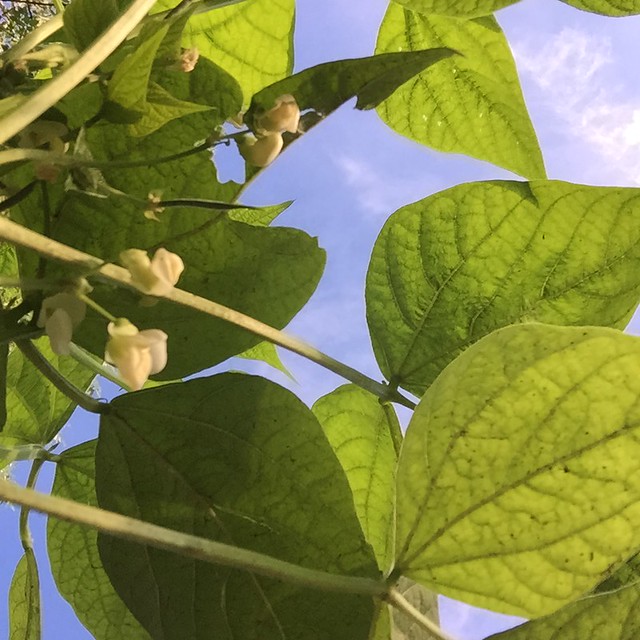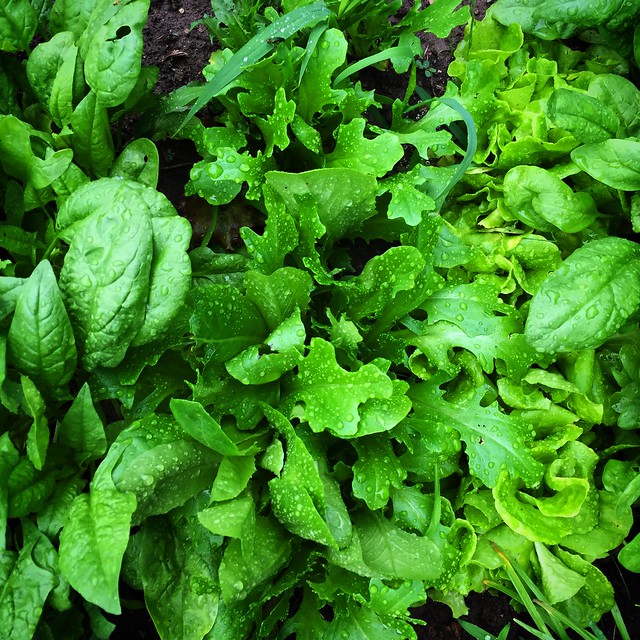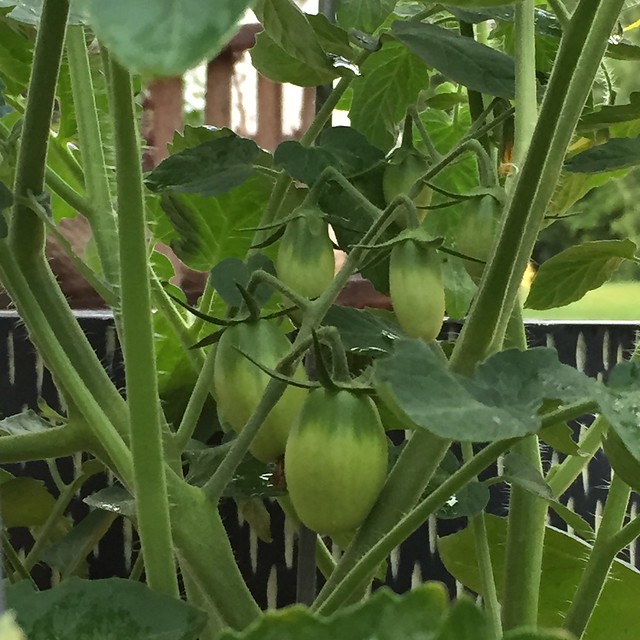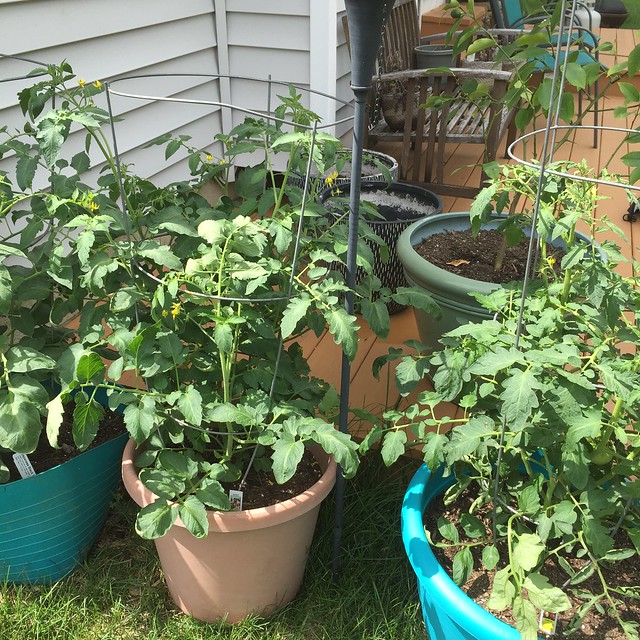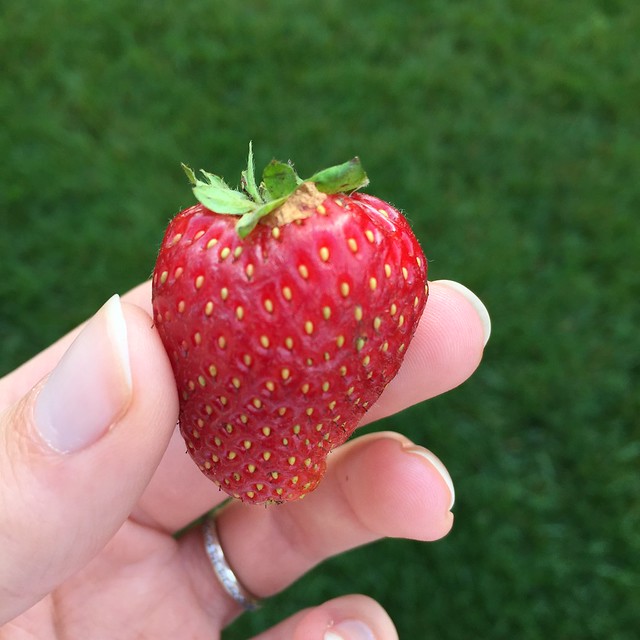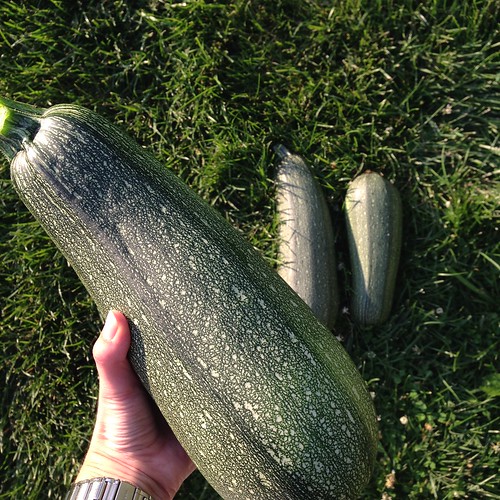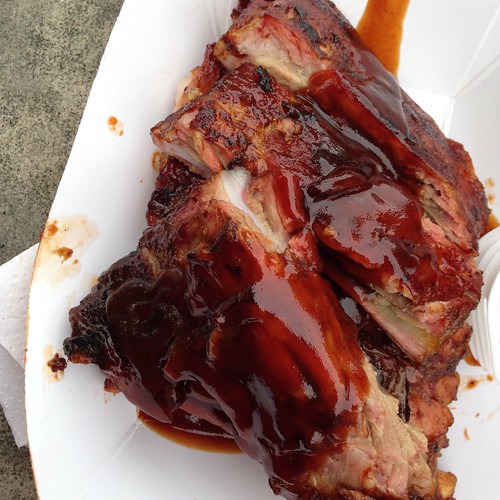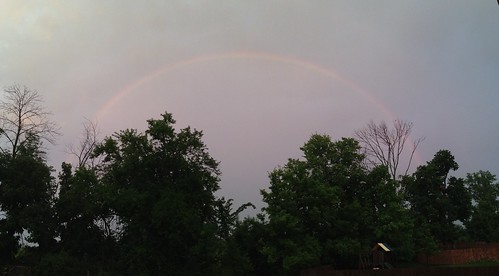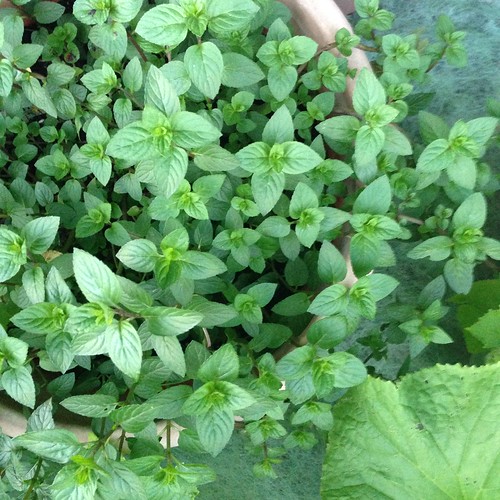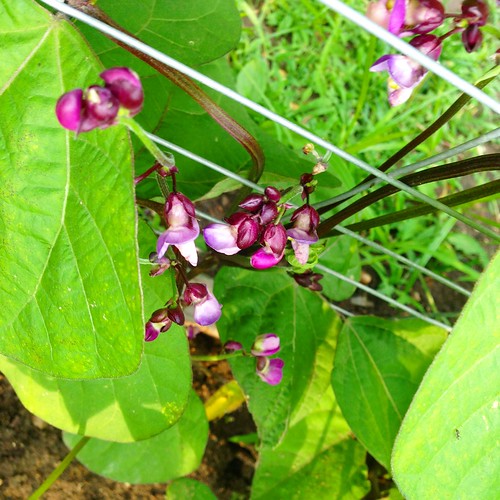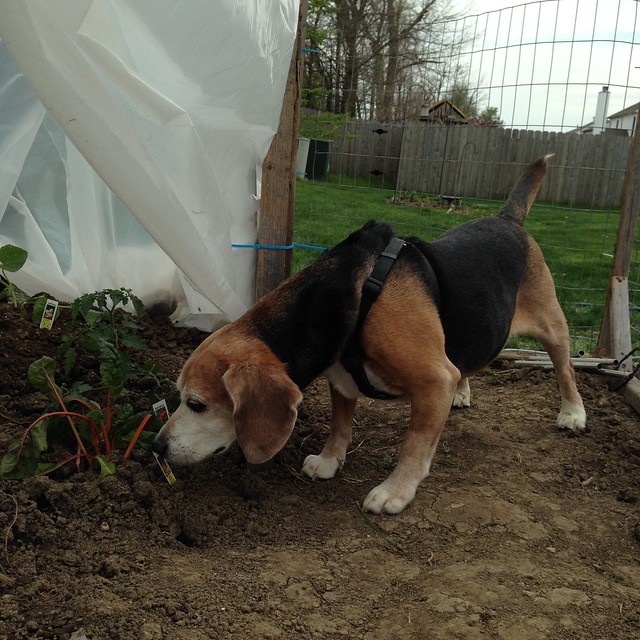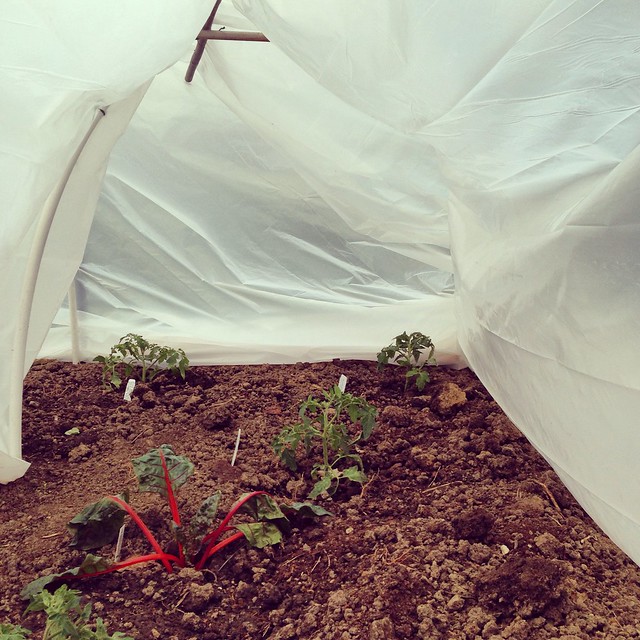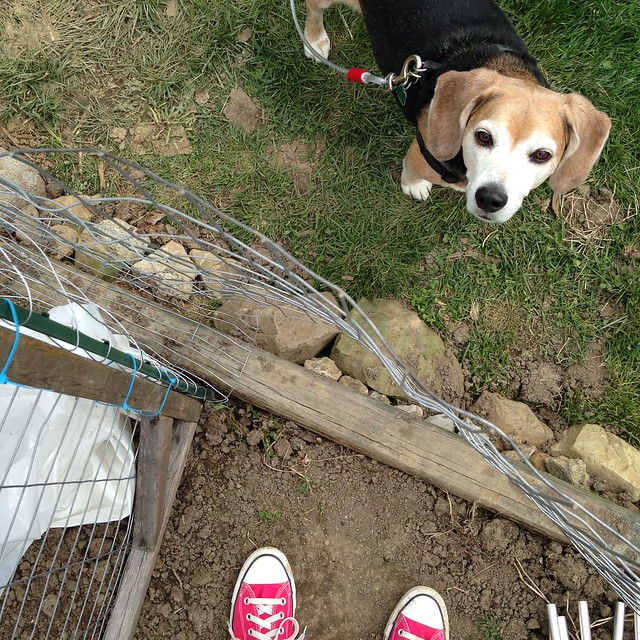Home » Posts filed under gardening
Posted by
yanti on Tuesday, June 30, 2015
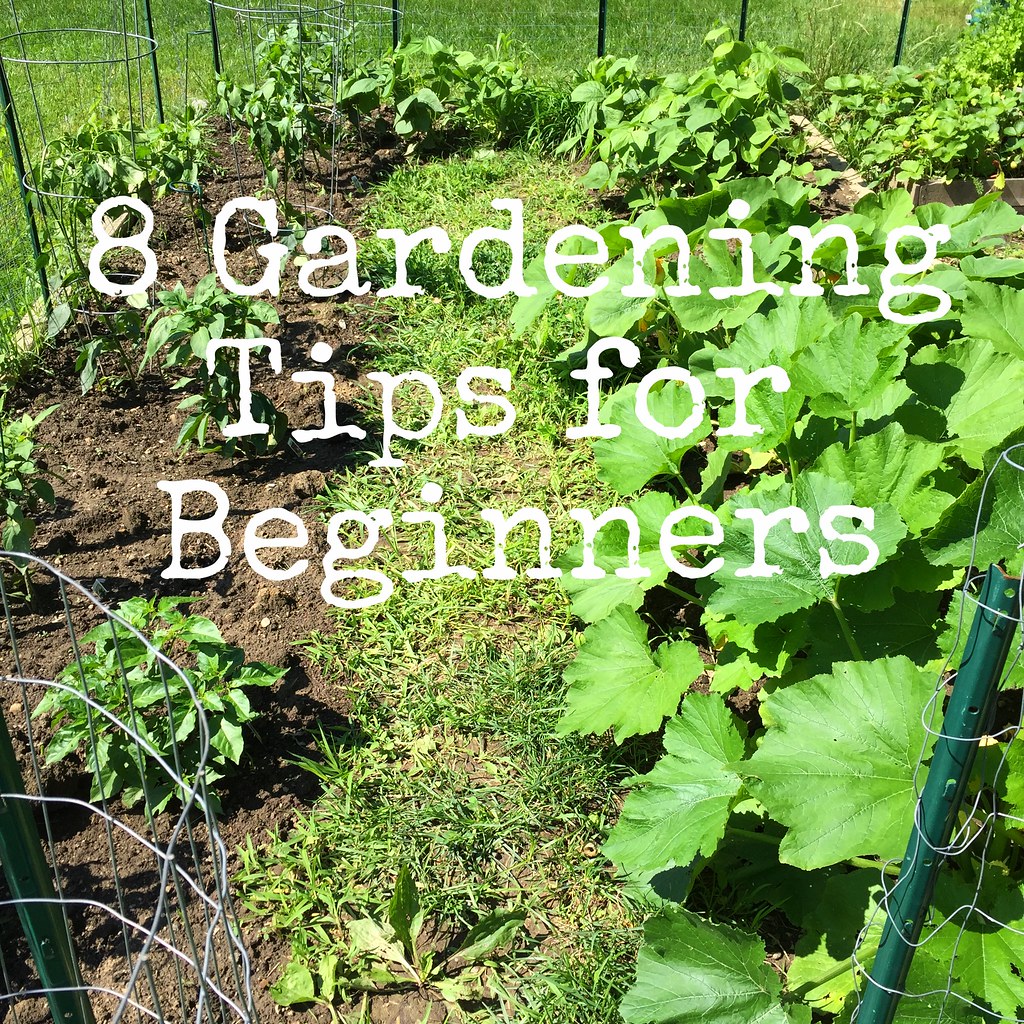
I haven't always wanted to grow my own food. I didn't even really understand where food came from for a while (besides that it came from farmers). As I started reading about nutrition and started cooking for myself, I wanted to see and be a part of the entire cycle of seed, plant, harvest, eat.
I read a little about gardening, but any gardener will tell you, the best learnings come from your garden (your success and failures), not from a book. Every garden is different, as is every gardener. You may have a patio with a couple pots or an acre of tilled soil. That dirt could have come from a bag or be rocky clay like mine was. I wanted to pass on my learnings because failure can be hard to overcome and can kill all motivation to grow your own food. But with these few tips, hopefully you'll bypass any setbacks and have success from year one!
1. Good dirt is essential! Our yard is rocky clay dirt. Just awful for growing anything but grass and weeds. So we knew to start, we needed raised beds with trucked in dirt. Too bad we didn't spring the extra dollars for some good, dark garden soil. But over time I've added amendments (compost, peat moss, and fertilizers) and we have good dirt!
2. You can use fertilizer and still grow things organically! I was so scared to use fertilizer when I started. Just the thought of whatever the plant eats will be in the vegetable which I will eat... ick! Well, my plants didn't grow because they didn't have enough nutrients in my awful dirt. I grabbed some organic fertilizer the next year and had much better results! Now I add it once when I'm planting and once mid growing season.
3. Don't neglect your garden halfway through! This one is still hard for me... I put it quite a bit of energy in the beginning; planting, weeding, watering, observing. Then summer comes and I want to do other things. The dirt dries up, the weeds take over, and the vegetables that are growing are forgotten. So pick a day of the week and spend 30 minutes watering and weeding. You'll know what's going on in your garden and harvest a lot more.
4. There are good and bad bugs. Some bugs can eat away at your entire garden if they invite their friends... others make your garden possible. Worms, ladybugs, fireflies, and pollinators (bees, butterflies, etc) are all garden friends. Slugs, caterpillars, grasshoppers, aphids, and most beetles are all trying to eat things in your garden before you do. Spray them off with a hose or use an organic insecticide (but not within one week of harvesting), I use diluted neem oil.
5. Most vegetables need one inch of water per week. If you have your plants in pots, it dehydrates faster, so water at least twice a week. And fully saturate the soil you're watering. The deeper the water grows, the deeper the roots grow. The deeper the roots, the bigger the plant. The bigger the plant, the more veggies you'll get! Also, if the water is underneath the surface, the sun can't zap it away.
6. When planting, dig deep. Especially with clay or rocky soil, when you dig out a hole that is deeper and wider than the plant actually needs, you have loosened up that soil so its roots can easily grow down and out making a stronger plant. Add some fertilizer at the bottom mixed with some loose soil... and those roots will reach down for it!
7. You might need a fence. If you have deer, rabbits, or dogs in your yard, you have just planted a buffet. I tried scarecrows, shiny items, noisy stuff, fake snakes, dog fur... so many things to keep the deer away. Nothing works quite as well as a cheap wire fence.
8. Know how much sun your garden will get. If your garden location doesn't get much sun, chances are good that you won't have much luck with tomatoes, peppers, or eggplant. If it gets full sun... you're lettuce and cabbage will bolt before you can harvest anything leaving bitter greens (but your tomatoes will be prolific!).
Now that you have the tips, you'll need some tools. Gardening should be a "cheap" hobby. As with any hobby, it's easy to spend more money than necessary. Here are four tools you will need to start...
And a couple that come in handy...
Gardening is great for giving you time to think and reflect. It's almost like meditation, but you're getting your hands dirty and fresh food. The past several years I have spent gardening has really made me feel closer to my food. Not just the stuff I grow myself, but knowing and understanding how the whole cycle works increases your appreciation of all food!
Posted by
yanti on Thursday, June 11, 2015
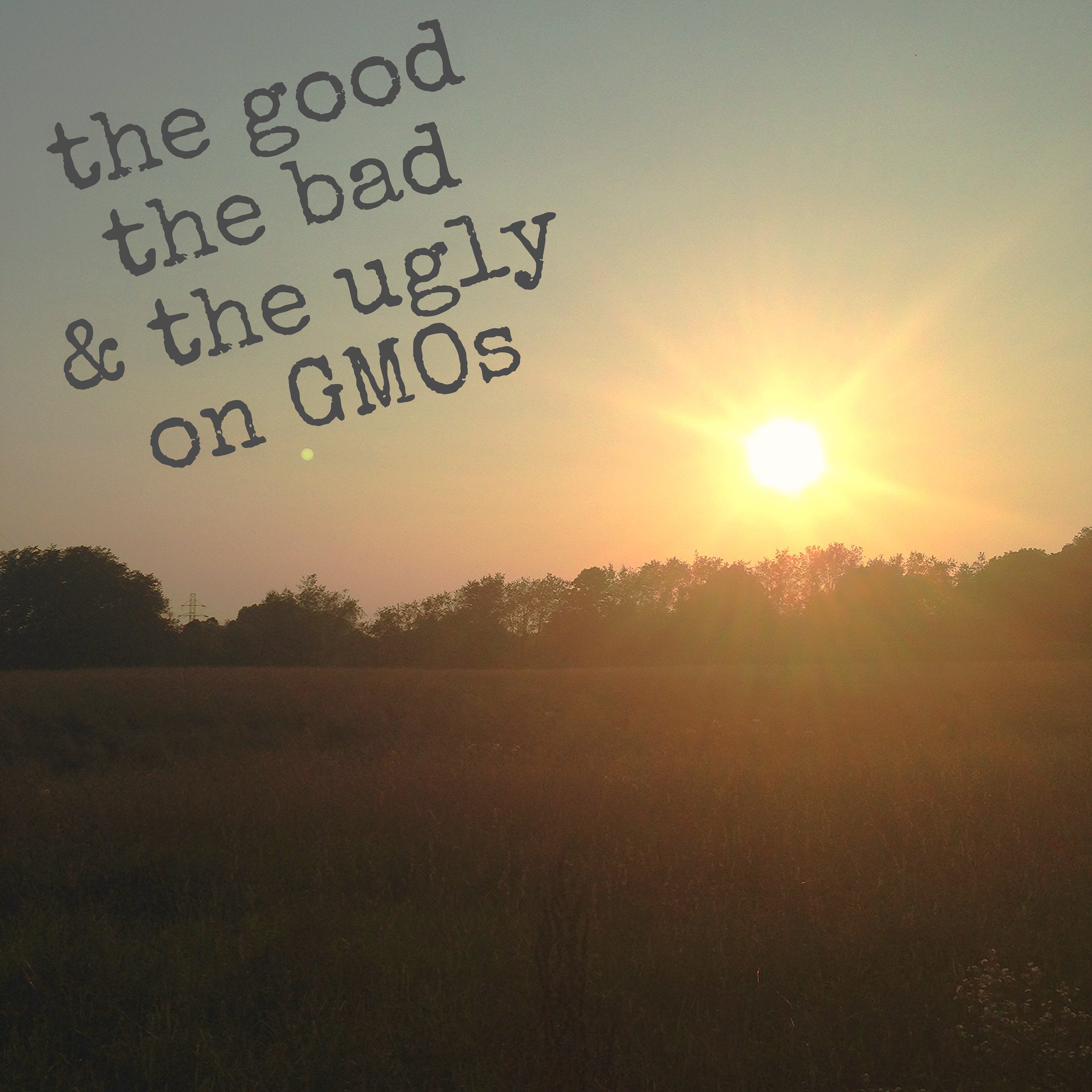 GMOs (or genetically modified organisms) have been in the new a lot over the past five years or so. In the last month, fast food restaurants like Taco Bell and Panera have announced they are removing GMOs and other artificial ingredients from their foods. Food Babe, a pretty controversial food blogger, also preaches the horrors of consuming GMOs. All are being met with some opposition from the science community saying that we shouldn't be afraid of scientific advancements in the food industry. All of this can be pretty confusing.
GMOs (or genetically modified organisms) have been in the new a lot over the past five years or so. In the last month, fast food restaurants like Taco Bell and Panera have announced they are removing GMOs and other artificial ingredients from their foods. Food Babe, a pretty controversial food blogger, also preaches the horrors of consuming GMOs. All are being met with some opposition from the science community saying that we shouldn't be afraid of scientific advancements in the food industry. All of this can be pretty confusing.
I take a pretty opinionated stance right in the middle ground.
So here are my pros and cons to GMOs...
The good...Genetic modification actually occurs in nature. If a bee pollinates a spicy habanero plant and then to a sweet tomato plant, that tomato will have a bit of a kick to it because of cross-pollination. As a gardener, that is how we get so many different varieties of plants to choose from. It is plant evolution. The seeds from the most delicious cross-pollinated fruits have been saved over the years and are now our heirloom varieties. My favorite tomato, purple cherokee, did not exist 100 years ago. Instead, it is a descendant of the original, Mexican tomato that grew like a wild flower.
There are so many that go hungry every day because they either do not have access to food or cannot afford it. When scientist find varieties that are naturally resistant to specific problems, like blight resistance or drought tolerance, and then cross-pollinating those in a lab with another variety that may be known for high yields results in a plant that provides a lot of food and doesn't need as much water or chemicals. More food using less resources sounds like a win in my book! Take that extra food and cost savings and distribute it to those who are hungry and that "GMO" solves (or gets closer to solving) world hunger.
The bad...Unfortunately, the Big Ag companies that are creating most of the GMOs aren't doing it to feed the world, they are doing it for profit. Companies like Monsanto and Bayer create seeds that are dependent on their chemicals. Or... the chemicals are "baked" right into the seed. Now think about a tiny seed injected with insecticides, fungicides, and fertilizers that becomes hardwired in the plant and therefore the food it produces. There have been too many reports of bees pollinating these chemically charged plants and dying on the spot. Now imagine what it could do to you (or to the cows and chickens that eat that same grain that end up on your grill).
Like I mentioned in my first point, some of these modifications are the natural process of plant evolution. However, the modifications Big Ag have been working on are getting patented. That means even if you're not using Monsanto seeds, pollinators will still travel between crops. This results in the patented GMO DNA in your non-GMO plants. Because of patent laws, this means companies like Monsanto are able to sue farmers for stealing their genetically modified intellectual property and prevent the farmer from being non-GMO certified.
The ugly...Now that you know not all GMOs are created equal, you still have your own consumer decision to make. Do you play it safe and go non-GMO whenever it is available? Do you support science's right to patent plant DNA knowing that some of them are trying to solve for world hunger and others are trying to profit? It is a confusing choice to make and certainly not an easy one.
Posted by
yanti on Sunday, July 20, 2014
I'm going to start doing bicep curls in the garden with my zucchini... these giants weighed in close to eight pounds a piece! I love that it keeps raining a couple times a week so I don't have to water the grass or garden at all (although if mother nature could keep the rain to times I'm at work or sleeping, that would be best). With all the rain, my garden is growing out of control. What used to be a nice clear walking path now has tomato branches, chard leaves, melon vines, and green bean shoots all over it! (... not that I'm complaining!)
I don't know what is about balloon flowers, but I just love them. I think it is cute the way they grow like a bubble (or balloon, whatever) and then pop open with this gorgeous purple color in the shape of a star. And my butterfly bush is finally blooming! I love this time of year when our yard is full of color and fragrance! :)
Speaking of fragrance... they need to bottle up the smell from Jazz & Rib Fest because as soon as we got out of the Jeep, the smell of barbecue hit me and I was instantly hungry. I only eat ribs once or twice a year just because I have to be in the mood to eat with my hands and get super messy... and when you have all the best rib joints from around the country, you have to indulge.
Went to support the Crew last night and they won (finally)! The game was sold out... so it looks like the World Cup has had an impact and soccer... ahem... futbol... is gaining some popularity here.
Alright, so the menu this week has a repeat from last week since I didn't get to it... but now I have ripe tomatoes to make fresh sauce for my zucchini lasagna! So procrastination results in a win this time. :)
zucchini enchiladas grilled rosemary chicken and corn on the cobzucchini lasagna (oops, didn't get to this last week)fajitasstuffed onions
More about → Weekly Menu
Posted by
yanti on Sunday, July 13, 2014
After an off-and-on stormy day, it ended with a full rainbow while I was making dinner tonight. A colorful reminder that there is always a silver lining, you just have to wait and be looking for it.
On the weekends we like to go out to eat, mostly because we're already out and about. So to get out of our same-place-every-Friday rut, we have been trying new restaurants every week for a couple months now. It's great to find new favorites and dishes to recreate at home. This week we went to Cork in Gahanna. It is a cute little wine bar with Italian tapas, entrees, and desserts and most of the dishes incorporate wine in them. The chocolate berry lava cake was delicious!
Enjoyed some sunshine this weekend reading the first issue of Stock & Barrel and out on the kayak (maybe a little too much sun, ouch). Tomatoes are starting to ripen and the mint is telling me it is mojito time!
Spent some time in the garden in between the storms today and found some zucchini I hadn't noticed before. They are huge! So to get back in control of the harvest, we'll be catching up by eating zucchini nearly every night including some zucchini bread in there too. What was I thinking when I planted enough seeds for SIX zucchini plants?!?
pizza nightstuffed zucchini with green beanszucchini lasagnaokra corn cakes with sauteed zucchinicreamy salmon pasta
extras: zucchini bread and baked peaches
More about → Weekly Menu
Posted by
yanti on Sunday, June 22, 2014
It's officially summer! Hope you're all enjoying the extra sunshine!
I'm so excited with the progress of my garden this year. It definitely shows that practice really does make perfect eventually. I went from killing every plant I touched (I never remembered to water things) to having a 8'x16' garden that is already producing more than we can eat!
After all those years, I would have to say, the trick is definitely the soil. I read several articles and books saying the same thing and I always thought dirt was dirt. It's what you put in the soil that counts. That is what the plant 'eats'. Yep... they do need water (everything does) and sunshine (for photosynthesis), but neither of those are feeding the plant to make it grow.
The secret to getting your soil right is really just some good organic fertilizer (or compost) with crushed asprin and calcium pills. The fertilizer when get a good base of nutrients back into your dirt. The asprin wards off disease in plants, just like it does for us. And then the added calcium helps several plants, especially tomatoes, from rotting prematurely. I have been using this technique for the past couple years thanks to Tom at Seeding a Good Life (check out his crazy large harvests).
My tomatoes are starting to turn from blossoms to fruit, green beans are finally trellising, zucchinis are growing, and my cantaloupe vines have taken over my chair. Now I just need to keep the bad bugs away and eat, share, and put up for later!
So now that my garden is hopping and will soon be producing pounds of zucchini (knock on wood)... this week I'm dusting off a few zucchini favorites and working on a couple new ones. Here is this week's meal plan...
stuffed squash blossomssquash stuffed shellsfish fillets, steamed broccoli, and cheesy chard biscuitshamburgers and red white and blueberry salad (go USA!)pizza night
More about → Weekly Menu
Posted by
yanti on Sunday, May 4, 2014

